#King James VII of Scotland
Explore tagged Tumblr posts
Text
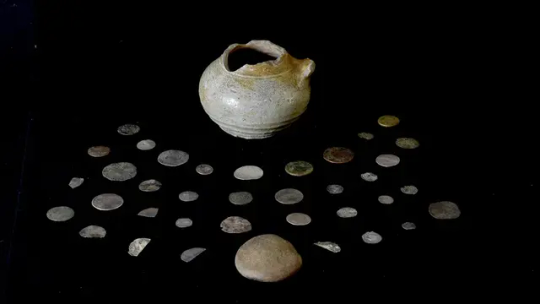
Scottish Coin Hoard Could be Linked to 1692's Glencoe Massacre
Coins found under a fireplace may have been hidden there by a victim of the infamous Massacre of Glencoe, according to archaeologists.
Almost 40 members of Clan MacDonald of Glencoe were killed in February 1692 after soldiers were ordered to attack them.
A student discovered the money at the site of a house linked to the clan's chief.
Lucy Ankers was on her first dig when she made the find.
The 36 coins were inside a pot which had a small round pebble as a lid and had been placed beneath a hearth stone slab in the fireplace.
The discovery was made in August during an excavation at the site of the ruined house, led by archaeologists from the University of Glasgow.
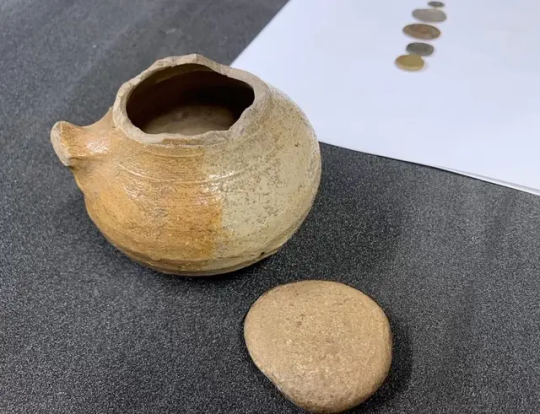
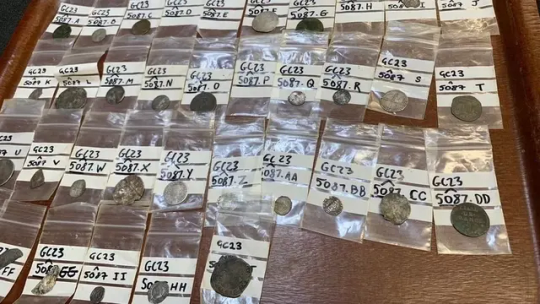
The property was associated with clan chief Alasdair Ruadh "MacIain" MacDonald of Glencoe.
He was among the estimated 38 people killed in the massacre.
Ms Ankers said: "As a first experience of a dig, Glencoe was amazing.
"The two weeks I spent digging solidified that I want to pursue a career within archaeology."
She added: "I wasn't expecting such an exciting find as one of my firsts, and I don't think I will ever beat the feeling of seeing the coins peeking out of the dirt in the pot."
The MacDonalds were targeted because of their support for the exiled King James VII of Scotland and II of England.
The clan backed the restoration of the Stuart dynasty to the British throne and had taken part in the first Jacobite Rising of 1689.
Historians say they were late delivering an oath of allegiance to the Protestant King William III, and had been branded as rebels by the Secretary of Scotland, Sir John Dalrymple.
In late January 1692, about 120 soldiers from the Earl of Argyll's Regiment of Foot arrived in Glencoe from Invergarry led by Capt Robert Campbell of Glen Lyon.
The troops were billeted with members of the clan, before turning on their hosts on 13 February.
Some people tried to escape in a snow blizzard to nearby glens, including Gleann Leac-na-muidhe, where the coin hoard was found.
The University of Glasgow has suggested a number of reasons why the money could be connected to the massacre.


None of the coins were minted after the 1680s, which has led archaeologists to suggest they were most likely deposited under the fireplace either just before or during the killings for safekeeping.
The archaeologists also said whoever buried the coins did not return for them, possibly indicating they were among the victims of the massacre.
The coins are dated from the late 1500s through to the 1680s, and include pieces from the reigns of Elizabeth I, James VI and I, Charles I, the Cromwellian Commonwealth, and Charles II.
There were also coins from France and the Spanish Netherlands, as well as one coin which appears to have originated in the Papal States.
Dr Michael Given, a co-director of the archaeological project in Glencoe, said: "These exciting finds give us a rare glimpse of a single, dramatic event.

"Here's what seems an ordinary rural house, but it has a grand fireplace, impressive floor slabs, and exotic pottery imported from the Netherlands and Germany.
"And they've gathered up an amazing collection of coins in a little pot and buried them under the fireplace.
"It's a real privilege, as archaeologists, to hold in our hands these objects that were so much part of people's lives in the past."
University of Glasgow excavations director Edward Stewart added: "The excavation of MacIain's Summerhouse allows us to better understand the importance of these uplands to local elites.
"The scale of this structure and the wealth of artefacts uncovered within suggest this was a place where the MacDonald chiefs could entertain with feasting, gambling, hunting and libations.
"The discovery of this coin hoard within the structure adds an exciting dimension to this story.
"However, ordinary and everyday finds within this structure such as spindle whorls for making thread, a pitch fork and a dress pin, speak to the everyday lives of those who lived here, worked the land and minded the cattle."
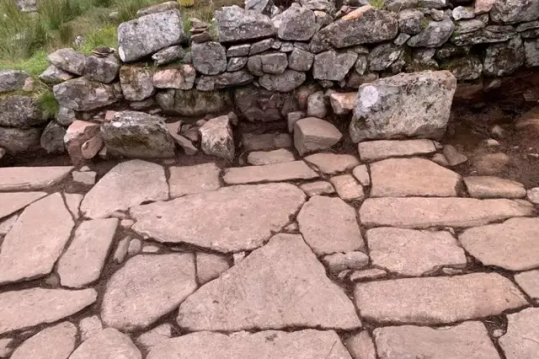
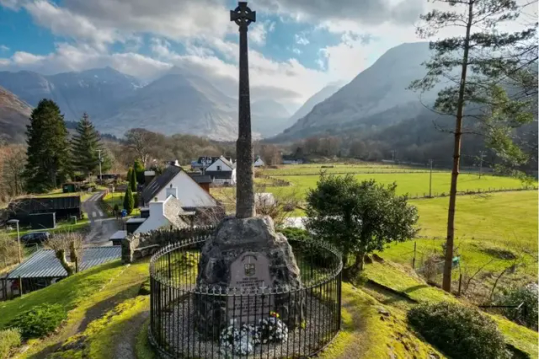
#Scottish Coin Hoard Could be Linked to 1692's Glencoe Massacre#Clan MacDonald of Glencoe#clan chief Alasdair Ruadh “MacIain” MacDonald of Glencoe#King James VII of Scotland#King William III#coins#collectable coins#ancient coins#ancient artifacts#archeology#archeolgst#history#history news#ancient history#ancient culture#ancient civilizations#scottish history
58 notes
·
View notes
Text

Portrait of King James II and VII in armour as Duke of York (1633-1701). By John Michael Wright.
#John Michael Wright#kingdom of england#king james ii#house of stuart#kingdom of scotland#house of stewart#Rìoghachd na h-Alba#king james vii#Kinrick o Scotland#Kongungdum Skotla#Rìgh Seumas VII#Ríoghacht Éireann#in armour#kingdom of ireland
4 notes
·
View notes
Text

James II as Duke of York. By Richard Gibson.
#uk#house of stuart#scottish dna#house of stewart#kingdom of england#kingdom of scotland#kingdom of ireland#king james ii#king of england#king james vii#king of scotland#duke of york#york#richard gibson#in armour#royalty
3 notes
·
View notes
Text



Lady Margaret Douglas as portrayed by Agnes O'Casey
Margaret was the daughter of Margaret Tudor, Queen Dowager of Scotland and Princess of England and Archibald Douglas, 6th Earl of Angus who was part of the Scottish nobility. She was the granddaughter of Henry VII, King of England and Elizabeth of York, Queen of England making her the niece of Henry VIII, King of England. Through her mother, she was also the half-sister of James V, King of Scotland.
(BBC's Wolf Hall: The Mirror and the Light Promotional Material)
#wolf hall#wolf hall: the mirror and the light#wolfhalledit#perioddramaedit#agnes o'casey#margaret douglas#my edits#i was gonna do her history after wolf hall but didn't wanna spoil#stills
194 notes
·
View notes
Text
Recently, I did a re-read of the AF series, and I am working through some thoughts I have on the Fowls and what allowed them to maintain power -- especially in the sense of being landed -- in Ireland after arriving during the Norman conquest in the 12th century.
Colfer establishes that Hugo de Folé and Virgil Butler arrived in Ireland during the first Norman crusades in the 12th century (1169).
“The first record of this unusual arrangement [between the Fowls and Butlers] was when Virgil Butler had been contracted as servant, bodyguard, and cook to Lord Hugo de Folé for one of the first great Norman crusades.” From: Artemis Fowl. By Eoin Colfer.
At once, these origins of the Fowls would make them ambiguously part of the Old English, a term from the modern period (post-1600) used to describe the descendants of the first Anglo-Norman conquerors who largely inhabited the Pale (Dublin and surrounding areas) and surrounding towns. Hugo de Folé and Virgil Butler would have likely been Catholic.
However, the origins of Fowl Manor complicate this.
The original Fowl castle had been built by Aodhán Fowl in the fifteenth century overlooking low-lying country on all sides. A tactic borrowed from the Normans. From: The Arctic Incident. By Eoin Colfer
In the 15th (c. 1401-1500) century, Aodhán Fowl acquired land for Fowl Manor in the Pale (Dublin and its surrounding areas); the estate has remained in the Fowls' possession ever since, which is important to note.
The Fowls' historical proximity to the Pale likely was what allowed them to maintain power over the centuries.
Between the 12th and 16th centuries, the Lordship of Ireland (1177-1542) placed swaths of Ireland under the control of Anglo-Norman lords loyal to the King of England.
However, by the 14th century (1300s), English rule of Ireland beyond the Pale (Dublin and its surrounding areas) was weakening. Beyond the Pale, (Catholic) Hiberno-Norman lords' fiefdoms had a degree of independence from the English, often adopting elements of Gaelic language and culture.
This changes around the 16th century with the Protestant Reformation and the Tudor conquest of Ireland. In 1536, Henry VIII of England decided to reconquer Ireland and bring it under crown control. Charles II, Henry VII's son, made the re-established Church of England even more explicitly Protestant.
Between the 16th and 17th centuries (c.1550s-1620s), Irish land was transferred to a new wave of (Protestant) settlers from Great Britain and Scotland to strengthen the Crown's weakening control over Ireland and Anglicize (and thus "civilize") the island; the land transfer was facilitated through the creation of plantations, such as the plantation of Ulster.
The Old English, which would have included descendants of de Folé and Virgil Butler, were supplanted by the New English, the Protestant landowners introduced by the Tudors in a number of ventures at plantations.
It is important to note the historical nuance that:
There was no equivalent in Ireland to the English Test Act of 1672, and there were plenty of precedents for exemptions to the Act of Supremacy. The legal position of Irish Catholics was, in many practical respects, better than that of English Catholics; many fines and penalties fell into abeyance under Charles [II], and the Catholic hierarchy co-operated openly with the Dublin administration. From James's [James VI and I] accession, the Church's position was obviously improved; priests emerged into the public eye and were allowed salaries, though they were not as yet endowed. Protestant superiority remained, in many areas, axiomatic; Catholics continued to occupy a curiously edgy position of formal inferiority combined with tacit toleration. But the ambiguities of their situation reflected the logic of local conditions just as much as the shifts in central policy. [...] But the 'Test clause in the 1704 [Popery] Act, obliging holders of public office to take sacraments according to the usage of the Church of Ireland, gradually excluded Presbyterians from town corporations even in Ulster. Despite the regium donum and the Toleration Act, their equivocal relationship with the civil power remained, and would provide a key theme in the radicalization of the Irish political world after 1780, when the threat of Catholic disaffection apparently receded. [From: Modern Ireland, 1600–1972. By R.F. Foster]
Still, the Popery Act would have had consequences for the historical Fowls and Butlers as Old English families. Beyond the Test clause in the Popery Act, it also limited Catholics' ability to buy/lease land, as well as limited inheritance from a Catholic to be by gavelkind i.e., divided equally, and thus shrinking with each generation, the estate between all sons, rather than according to Primogeniture.
It begs the question of how Fowl Manor remained in the hands of the family, rather than becoming the estate of a member of the New English.
As anti-Catholic sentiment was largely grounded in the political context of loyalty to the Crown (as opposed to the Pope), certain members of the Old English gentry could have (and did!) find ways to join the wave of the Protestant Ascendancy.
"The Anglo-Ireland of the day in fact encompassed sizable middle and lower classes -- a heterogeneity that Foster finds "exemplified by that quintessential Ascendancy institution, Trinity College: defined by Anglicanism but containing sons of peers, of shoemakers, of distillers, of butchers, of surgeons, and of builders" (Foster 1989, 173). And not all the "Anglo-Irish" were, strictly speaking, "Anglo." Early in Bowen's Court, Bowen's historical account of her family's Cork home, we learn that "Bowen" derives from the Welsh "ab Owen" or "ap Owen" (Bowen 1942a, 33). Other Anglo-Irish men and women traced their ancestry to the Old English and to Catholics who converted to Protestantism in order to reap the accompanying social, political and material rewards. Violet Martin (better known as Martin Ross) descended from the Old English Martins of Ross, who had owned land in Galway and had converted to Protestantism in the eighteenth century (McMahon 1968, 123). As Thomas Flanagan concludes, "there were many ways of being Anglo-Irish" (Flanagan 1966, 59). So what, then, defined Anglo-Irishness? In [R.F. ] Foster's view, it was Anglicanism. Anglicanism "defined a social elite, professional as well as landed, whose descent could be Norman, Old English, Cromwellian or even (in a very few cases) ancient Gaelic. Anglicanism conferred exclusivity, in Ireland as in contemporary England; and exclusivity defined the [Protestant] Ascendancy, not ethnic origin" From: An Anarchy in the Mind And in the Heart: Narrating Anglo-Ireland. By Ellen M. Wolff
And what do we find out in the first book of Artemis Fowl?
"Beside [Angeline] was a facsimile of [Artemis'] father, constructed from the morning suit he'd worn on that glorious day in Christchurch Cathedral fourteen years ago." From: Artemis Fowl. By Eoin Colfer
Christchurch Cathedral (in Dublin) is Anglican in denomination!
I just think it is so cool that across a few sentences from Artemis Fowl and The Arctic Incident, it is possible to situate the Fowl family within a semi-realistic history of Ireland.
#artemis fowl#long post#sources for this are largely rf foster's modern ireland 1600-1972#and ruth canning's The Old English in Early Modern Ireland#also I am not an expert when it comes to irish history! just an enthusiast/hobby researcher
92 notes
·
View notes
Text

FRANCES GREY, DUCHESS OF SUFFOLK, MOTHER OF A QUEEN
Born Frances Brandon, named after St. Francis of Assisi but also in honour of the King of France, Francis I, who was once the stepson-in-law of her mother and who had granted the marriage of her parents. Daughter of Charles Brandon, 1st Duke of Suffolk and Mary Tudor, Princess of England and Dowager Queen of France, she was the eldest daughter of her parents' union and after the death of her brother their eldest child. Sister to Eleanor Clifford, later Countess of Cumberland. She had two full brothers one elder and one younger, who did not reach adulthood. By her father, she had four half-siblings, like her full brothers her younger brothers did not reach adulthood. Granddaughter of Henry VII, King of England and Elizabeth of York, Queen of England. Making her the niece of Henry VIII, King of England and per the Act of Succession 1536 the first person in line for the English throne outside of her uncle's marriages, as her mother's heirs took precedence over her Scottish cousins who were through her aunt - the elder of Henry VII's daughters - Margaret, Queen of Scotland's line. Her first marriage was to Henry Grey, initially Marquess of Dorset who later acceded the Dukedom of Suffolk after her father's death. Henry Grey was related through their common ancestress Elizabeth Woodville, Queen of England, Henry through Elizabeth's first marriage and Frances through her second. Her second husband was Adrian Stokes, the Master of the Horse to her cousin Mary I. Mother to Jane Grey, Queen of England for nine days (technically thirteen if you take the date of the death of Edward VI) who was made heir by Edward VI brushing over Frances's own claim. Also, the mother to Katherine Grey and Mary Grey, who at times during Elizabeth I's reign were considered viable heirs by the court. She had a loving relationship with her stepmother Catherine Willoughby and socialized in the same circles, including the protestant circles of her uncle's latter reign and her cousin Edward's reign. Beloved friend to her Aunt by marriage Catherine Parr, Queen of England who was also a good friend of her stepmother. Friend to her cousin Mary I, even after Mary had put her Husband, Daughter and son-in-law to death. Mary, Frances and their cousin - through their aunt Margaret, Queen of Scotland - Margaret Douglas were all close in age and brought up in the court of Henry VIII. Mary ended up on the throne, with Frances being the mother of a Queen and Margaret being the mother of a King Consort of Scotland and later the grandmother of James I, King of England.
[Anna Chancellor as Lady France Grey, in Amazon Prime's My Lady Jane]
#my lady jane#myladyjaneedit#perioddramaedit#anna chancellor#frances grey#frances brandon#original edit#edit#show: my lady jane
163 notes
·
View notes
Text
Below the cut I have made a list of each English and British monarch, the age of their mothers at their births, and which number pregnancy they were the result of. Particularly before the early modern era, the perception of Queens and childbearing is quite skewed, which prompted me to make this list. I started with William I as the Anglo-Saxon kings didn’t have enough information for this list.
House of Normandy
William I (b. c.1028)
Son of Herleva (b. c.1003)
First pregnancy.
Approx age 25 at birth.
William II (b. c.1057/60)
Son of Matilda of Flanders (b. c.1031)
Third pregnancy at minimum, although exact birth order is unclear.
Approx age 26/29 at birth.
Henry I (b. c.1068)
Son of Matilda of Flanders (b. c.1031)
Fourth pregnancy at minimum, more likely eighth or ninth, although exact birth order is unclear.
Approx age 37 at birth.
Matilda (b. 7 Feb 1102)
Daughter of Matilda of Scotland (b. c.1080)
First pregnancy, possibly second.
Approx age 22 at birth.
Stephen (b. c.1092/6)
Son of Adela of Normandy (b. c.1067)
Fifth pregnancy, although exact birth order is uncertain.
Approx age 25/29 at birth.
Henry II (b. 5 Mar 1133)
Son of Empress Matilda (b. 7 Feb 1102)
First pregnancy.
Age 31 at birth.
Richard I (b. 8 Sep 1157)
Son of Eleanor of Aquitaine (b. c.1122)
Sixth pregnancy.
Approx age 35 at birth.
John (b. 24 Dec 1166)
Son of Eleanor of Aquitaine (b. c.1122)
Tenth pregnancy.
Approx age 44 at birth.
House of Plantagenet
Henry III (b. 1 Oct 1207)
Son of Isabella of Angoulême (b. c.1186/88)
First pregnancy.
Approx age 19/21 at birth.
Edward I (b. 17 Jun 1239)
Son of Eleanor of Provence (b. c.1223)
First pregnancy.
Age approx 16 at birth.
Edward II (b. 25 Apr 1284)
Son of Eleanor of Castile (b. c.1241)
Sixteenth pregnancy.
Approx age 43 at birth.
Edward III (b. 13 Nov 1312)
Son of Isabella of France (b. c.1295)
First pregnancy.
Approx age 17 at birth.
Richard II (b. 6 Jan 1367)
Son of Joan of Kent (b. 29 Sep 1326/7)
Seventh pregnancy.
Approx age 39/40 at birth.
House of Lancaster
Henry IV (b. c.Apr 1367)
Son of Blanche of Lancaster (b. 25 Mar 1342)
Sixth pregnancy.
Approx age 25 at birth.
Henry V (b. 16 Sep 1386)
Son of Mary de Bohun (b. c.1369/70)
First pregnancy.
Approx age 16/17 at birth.
Henry VI (b. 6 Dec 1421)
Son of Catherine of Valois (b. 27 Oct 1401)
First pregnancy.
Age 20 at birth.
House of York
Edward IV (b. 28 Apr 1442)
Son of Cecily Neville (b. 3 May 1415)
Third pregnancy.
Age 26 at birth.
Edward V (b. 2 Nov 1470)
Son of Elizabeth Woodville (b. c.1437)
Sixth pregnancy.
Approx age 33 at birth.
Richard III (b. 2 Oct 1452)
Son of Cecily Neville (b. 3 May 1415)
Eleventh pregnancy.
Age 37 at birth.
House of Tudor
Henry VII (b. 28 Jan 1457)
Son of Margaret Beaufort (b. 31 May 1443)
First pregnancy.
Age 13 at birth.
Henry VIII (b. 28 Jun 1491)
Son of Elizabeth of York (b. 11 Feb 1466)
Third pregnancy.
Age 25 at birth.
Edward VI (b. 12 Oct 1537)
Son of Jane Seymour (b. c.1509)
First pregnancy.
Approx age 28 at birth.
Jane (b. c.1537)
Daughter of Frances Brandon (b. 16 Jul 1517)
Third pregnancy.
Approx age 20 at birth.
Mary I (b. 18 Feb 1516)
Daughter of Catherine of Aragon (b. 16 Dec 1485)
Fifth pregnancy.
Age 30 at birth.
Elizabeth I (b. 7 Sep 1533)
Daughter of Anne Boleyn (b. c.1501/7)
First pregnancy.
Approx age 26/32 at birth.
House of Stuart
James I (b. 19 Jun 1566)
Son of Mary I of Scotland (b. 8 Dec 1542)
First pregnancy.
Age 23 at birth.
Charles I (b. 19 Nov 1600)
Son of Anne of Denmark (b. 12 Dec 1574)
Fifth pregnancy.
Age 25 at birth.
Charles II (b. 29 May 1630)
Son of Henrietta Maria of France (b. 25 Nov 1609)
Second pregnancy.
Age 20 at birth.
James II (14 Oct 1633)
Son of Henrietta Maria of France (b. 25 Nov 1609)
Fourth pregnancy.
Age 23 at birth.
William III (b. 4 Nov 1650)
Son of Mary, Princess Royal (b. 4 Nov 1631)
Second pregnancy.
Age 19 at birth.
Mary II (b. 30 Apr 1662)
Daughter of Anne Hyde (b. 12 Mar 1637)
Second pregnancy.
Age 25 at birth.
Anne (b. 6 Feb 1665)
Daughter of Anne Hyde (b. 12 Mar 1637)
Fourth pregnancy.
Age 27 at birth.
House of Hanover
George I (b. 28 May 1660)
Son of Sophia of the Palatinate (b. 14 Oct 1630)
First pregnancy.
Age 30 at birth.
George II (b. 9 Nov 1683)
Son of Sophia Dorothea of Celle (b. 15 Sep 1666)
First pregnancy.
Age 17 at birth.
George III (b. 4 Jun 1738)
Son of Augusta of Saxe-Gotha (b. 30 Nov 1719)
Second pregnancy.
Age 18 at birth.
George IV (b. 12 Aug 1762)
Son of Charlotte of Mecklenburg-Strelitz (b. 19 May 1744)
First pregnancy.
Age 18 at birth.
William IV (b. 21 Aug 1765)
Son of Charlotte of Mecklenburg-Strelitz (b. 19 May 1744)
Third pregnancy.
Age 21 at birth.
Victoria (b. 24 May 1819)
Daughter of Victoria of Saxe-Coburg-Saafield (b. 17 Aug 1786)
Third pregnancy.
Age 32 at birth.
Edward VII (b. 9 Nov 1841)
Daughter of Victoria of the United Kingdom (b. 24 May 1819)
Second pregnancy.
Age 22 at birth.
House of Windsor
George V (b. 3 Jun 1865)
Son of Alexandra of Denmark (b. 1 Dec 1844)
Second pregnancy.
Age 20 at birth.
Edward VIII (b. 23 Jun 1894)
Son of Mary of Teck (b. 26 May 1867)
First pregnancy.
Age 27 at birth.
George VI (b. 14 Dec 1895)
Son of Mary of Teck (b. 26 May 1867)
Second pregnancy.
Age 28 at birth.
Elizabeth II (b. 21 Apr 1926)
Daughter of Elizabeth Bowes-Lyon (b. 4 Aug 1900)
First pregnancy.
Age 25 at birth.
Charles III (b. 14 Nov 1948)
Son of Elizabeth II of the United Kingdom (b. 21 Apr 1926)
First pregnancy.
Age 22 at birth.
381 notes
·
View notes
Text



On September 25th 1586 Mary Queen of Scots was moved to her final prison at Fotheringhay Castle.
Mary became Queen at six days old and, briefly, Queen of France at sixteen. As Henry VII’s great-granddaughter she had a strong claim to the English throne too; a stronger claim, depending on your point of view, than that of her cousin, Elizabeth, whose rule of England began in 1558. Forced to abdicate the Scottish throne in favour of her infant son, James, and subsequently flee the country, Mary sought refuge in England in 1568.
She was just twenty-five years old and was to spend the next nineteen years, as a captive guest of the English queen, in a succession of castles and manor houses in the north and midlands of England, most notably at the now largely invisible Sheffield Castle. Though treated as befitted her status, she was nonetheless a prisoner. She spent much time on embroidery and riding.
The problem with Mary was nothing to do with any feud between England and Scotland, nor on a personal level was it really a difference in religious dogma between Catholic Mary and Protestant Elizabeth: it was a simple matter of power. Many Catholics – including the king of England’s No 1 Enemy at the time, Spain – regarded Elizabeth as a bastard who should not be sitting on England’s throne at all. And Mary, with her claim to the title, became the focus of every Catholic plot – of which there were several – against Elizabeth.
Eventually, she was proven to have been involved in the Babington Plot, a plan to assassinate Elizabeth and replace her with Mary. The Queen of Scots was transferred to Fotheringhay in September 1586. Fotheringhay had held distinguished prisoners before, including during the reign of Elizabeth’s half-sister and predecessor, Mary, and in the distant past after the battles of Dunbar and Agincourt.
Mary was brought to Fotheringhay from Chartley in Staffordshire to stand trial for treason.The castle was set in a marshy landscape, where access was difficult, especially during the winter months.It was felt by the authorities that the unfortunate Scottish queen would be more secure at Fotheringhay, and the location would discourage any rash attempt to free her by force.
Mary was tried at the castle on 14th and 15th October 1587 in a show trial and predictably found guilty on 25th October - a foregone conclusion.
I shall take up the story again in a few weeks
34 notes
·
View notes
Text
Holy shit! Kamala Harris's VP is none other than James Francis Edward Stuart, fifth son of James II & VII and rightful King of England, Scotland, France and Ireland! This is huge for the Jacobite succession movement.
40 notes
·
View notes
Text
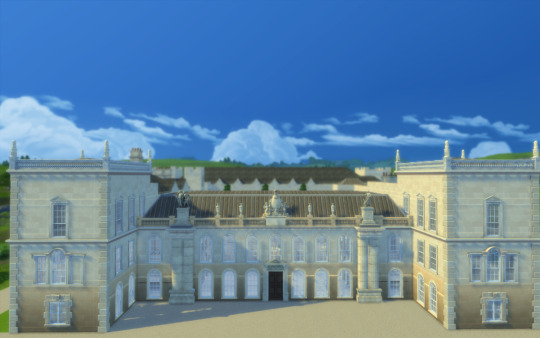

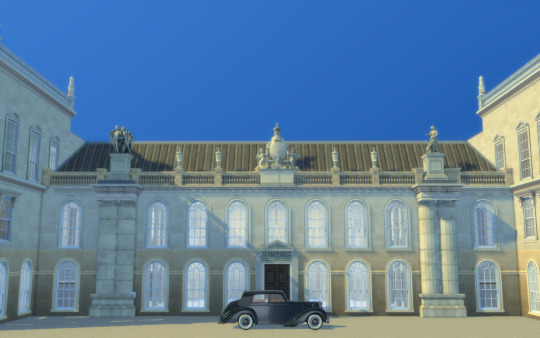
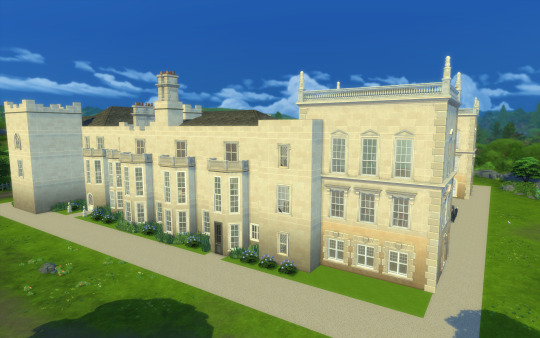
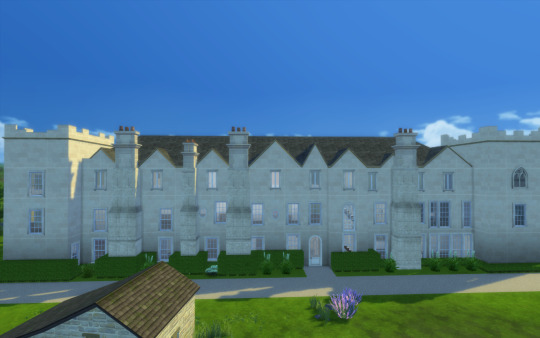
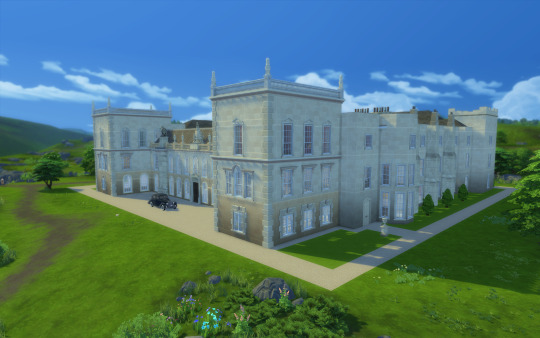
Grimsthorpe Castle
Hi guys!!
I'm sharing another grand english state!
House History: The building was originally a small castle on the crest of a ridge on the road inland from the Lincolnshire fen edge towards the Great North Road. It is said to have been begun by Gilbert de Gant, Earl of Lincoln in the early 13th century. However, he was the first and last in this creation of the Earldom of Lincoln and he died in 1156. Gilbert's heyday was the peak time of castle building in England, during the Anarchy. It is quite possible that the castle was built around 1140. However, the tower at the south-east corner of the present building is usually said to have been part of the original castle and it is known as King John's Tower. The naming of King John's tower seems to have led to a misattribution of the castle's origin to his time.
Gilbert de Gant spent much of his life in the power of the Earl of Chester and Grimsthorpe is likely to have fallen into his hands in 1156 when Gilbert died, though the title 'Earl of Lincoln' reverted to the crown. In the next creation of the earldom, in 1217, it was Ranulph de Blondeville, 4th Earl of Chester (1172–1232) who was ennobled with it. It seems that the title, if not the property was in the hands of King John during his reign; hence perhaps, the name of the tower.
During the last years of the Plantagenet kings of England, it was in the hands of Lord Lovell. He was a prominent supporter of Richard III. After Henry VII came to the throne, Lovell supported a rebellion to restore the earlier royal dynasty. The rebellion failed and Lovell's property was taken confiscated and given to a supporter of the Tudor Dynasty.[2]
The Tudor period
This grant by Henry VIII, Henry Tudor's son, to the 11th Baron Willoughby de Eresby was made in 1516, together with the hand in marriage of Maria de Salinas, a Spanish lady-in-waiting to Queen Catherine of Aragon. Their daughter Katherine inherited the title and estate on the death of her father in 1526, when she was aged just seven. In 1533, she became the fourth wife of Charles Brandon, 1st Duke of Suffolk, a close ally of Henry VIII. In 1539, Henry VIII granted Charles Suffolk the lands of the nearby suppressed Vaudey Abbey, founded in 1147, and he used its stone as building material for his new house. Suffolk set about extending and rebuilding his wife's house, and in only eighteen months it was ready for a visit in 1541 by King Henry, on his way to York to meet his nephew, James V of Scotland. In 1551, James's widow Mary of Guise also stayed at Grimsthorpe. The house stands on glacial till and it seems that the additions were hastily constructed. Substantial repairs were required later owing to the poor state of the foundations, but much of this Tudor house can still be seen today.
During Mary's reign the castle's owners, Katherine Brandon, Duchess of Suffolk (née Willoughby) and her second husband, Richard Bertie, were forced to leave it owing to their Anglican views. On Elizabeth's succeeding to the throne, they returned with their daughter, Susan, later Countess of Kent and their new son Peregrine, later the 13th Baron. He became a soldier and spent much of his time away from Grimsthorpe.
The Vanbrugh building
By 1707, when Grimsthorpe was illustrated in Britannia Illustrata, the 15th Baron Willoughby de Eresby and 3rd Earl Lindsey had rebuilt the north front of Grimsthorpe in the classical style. However, in 1715, Robert Bertie, the 16th Baron Willoughby de Eresby, employed Sir John Vanbrugh to design a Baroque front to the house to celebrate his ennoblement as the first Duke of Ancaster and Kesteven. It is Vanbrugh's last masterpiece. He also prepared designs for the reconstruction of the other three ranges of the house, but they were not carried out. His proposed elevation for the south front was in the Palladian style, which was just coming into fashion, and is quite different from all of his built designs.
The North Front of Grimsthorpe as rebuilt by Vanbrugh, drawn in 1819. Vanbrugh's Stone Hall occupies the space between the columns on both floors.
Inside, the Vanbrugh hall is monumental with stone arcades all around at two levels. Arcaded screens at each end of the hall separate the hall from staircases, much like those at Audley End House and Castle Howard. The staircase is behind the hall screen and leads to the staterooms on the first floor. The State Dining Room occupies Vanbrugh's north-east tower, with its painted ceiling lit by a Venetian window. It contains the throne used by George IV at his Coronation Banquet, and a Regency giltwood throne and footstool used by Queen Victoria in the old House of Lords. There is also a walnut and parcel gilt chair and footstool made for the use of George III at Westminster. The King James and State Drawing Rooms have been redecorated over the centuries, and contain portraits by Reynolds and Van Dyck, European furniture, and yellow Soho Tapestries woven by Joshua Morris around 1730. The South Corridor contains thrones used by Prince Albert and Edward VII, as well as the desk on which Queen Victoria signed her coronation oath. A series of rooms follows in the Tudor east range, with recessed oriel windows and ornate ceilings. The Chinese drawing room has a splendidly rich ceiling and an 18th-century fan-vaulted oriel window. The walls are hung with Chinese wallpaper depicting birds amidst bamboo. The chapel is magnificent with superb 17th-century plasterwork.
More history: https://en.wikipedia.org/wiki/Grimsthorpe_Castle
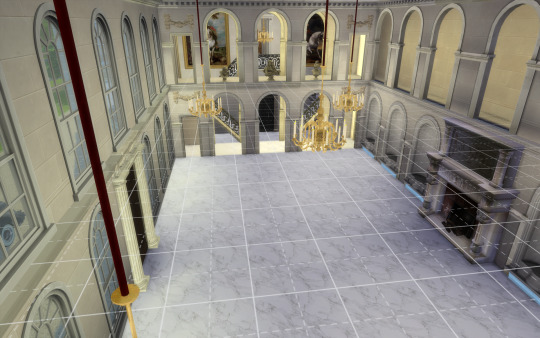
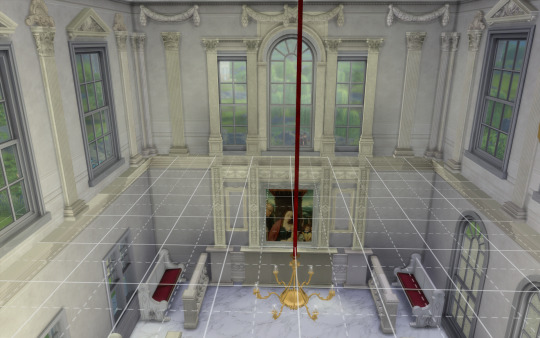
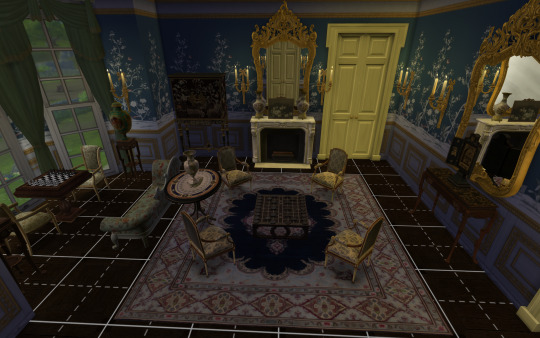
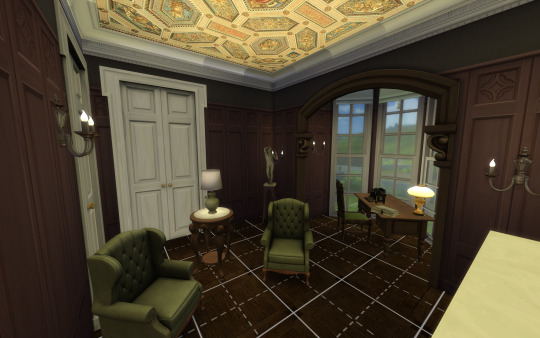
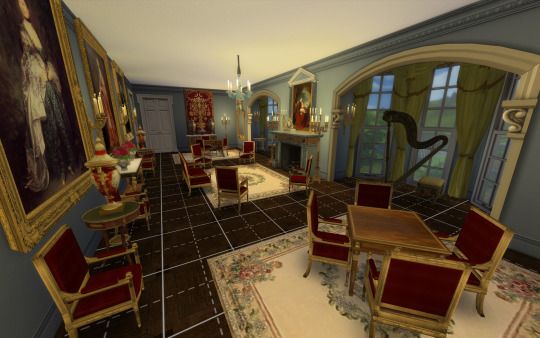
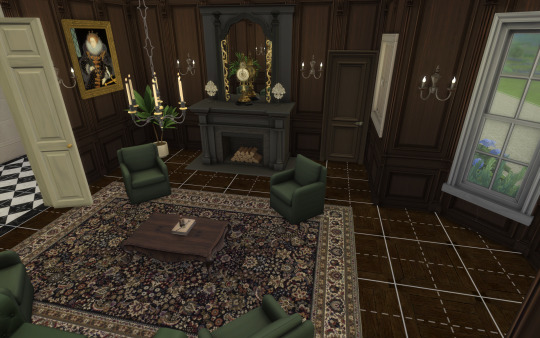
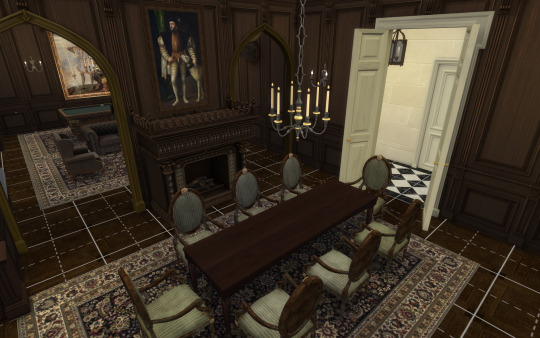
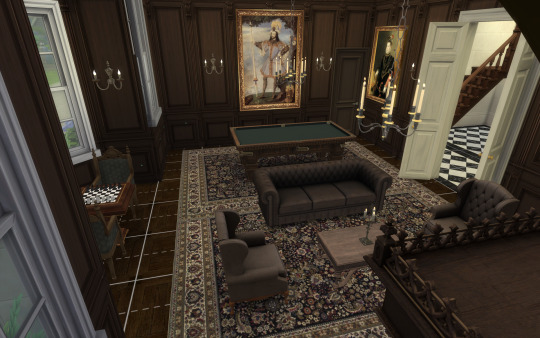
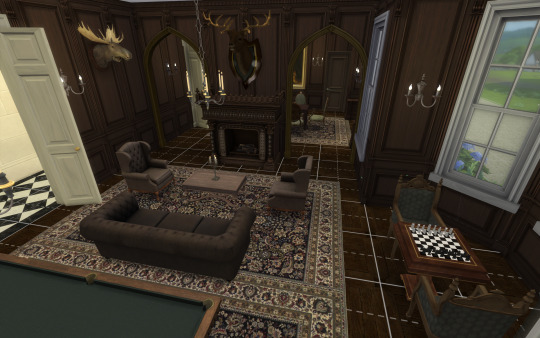

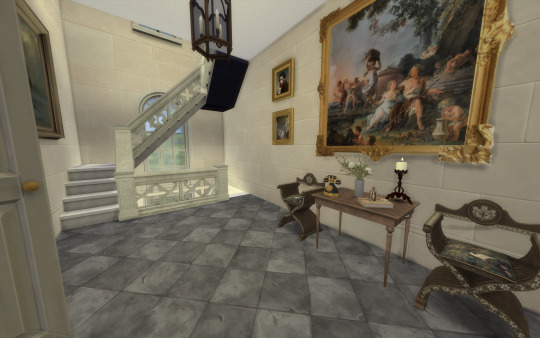
This house fits a 64x64 lot and features several impressive rooms, more than 29 bedrooms, a servants hall and several state rooms!
I only decored some of the main rooms, for you to have a glimpse of the distribution. The rest is up to you, as I have stated that I do not like interiors :P
Be warned: I did not have the floor plan for the tudor rooms, thus, the distribution is based on my own decision and can not fit the real house :P.
You will need the usual CC I use: all of Felixandre, The Jim, SYB, Anachrosims, Regal Sims, TGS, The Golden Sanctuary, Dndr recolors, etc.
Please enjoy, comment if you like it and share pictures with me if you use my creations!
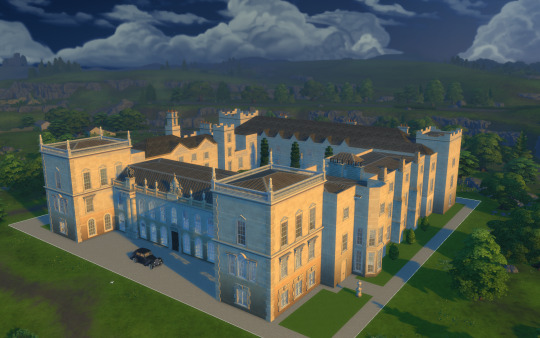






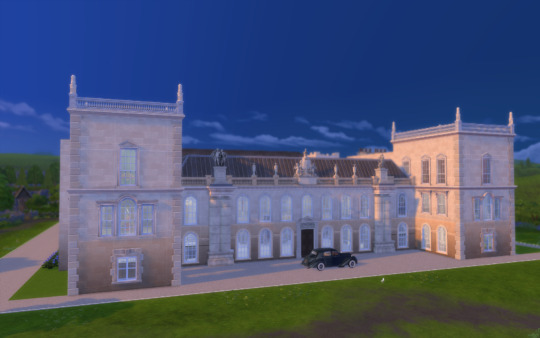
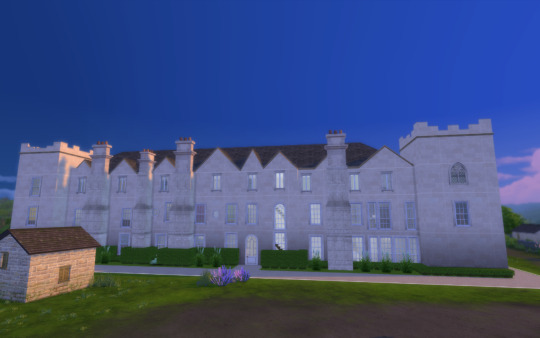
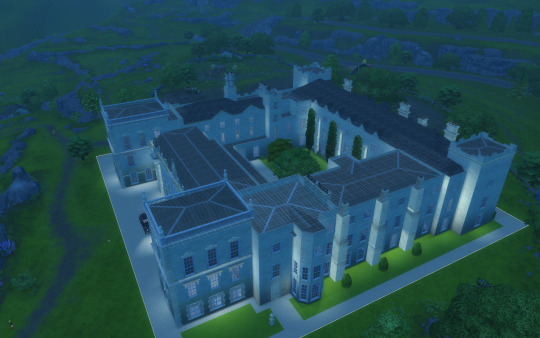
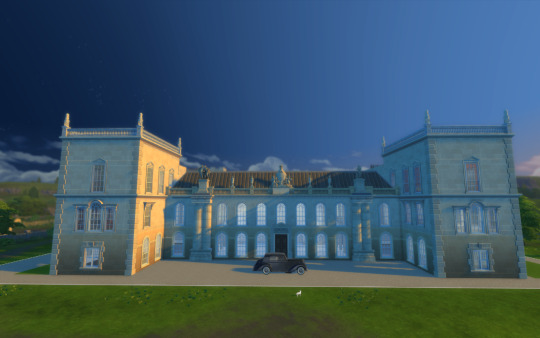
DOWNLOAD (Early acces: June 30) https://www.patreon.com/posts/grimsthorpe-101891128
#sims 4 architecture#sims 4 build#sims4#sims4play#sims 4 screenshots#sims 4 historical#sims4building#sims4palace#sims 4 royalty#ts4 download#ts4#ts4 gameplay#ts4 simblr#ts4cc#ts4 legacy#sims 4 gameplay#sims 4 legacy#sims 4 cc#thesims4#sims 4#the sims 4#sims 4 aesthetic#ts4 cc#english manor
42 notes
·
View notes
Text

Henry Stuart, Lord Darnley, 1545 - 1567. Consort of Mary, Queen of Scots
Artist: Unknown
Date: About 1564
Medium: Oil on panel
Collection: National Galleries of Scotland, Edinburgh, Scotland
Description
Henry Stuart, Lord Darnley, is shown here in his late teens, shortly before his marriage to his cousin Mary, Queen of Scots. Darnley's direct descent from both King James II of Scotland and Henry VII of England meant that a match with his cousin made perfect dynastic sense; it created a monarchy free from foreign ties and strengthened the couple's claims to the English throne. They were married in July 1566 and their only child, James VI, was born in June of the following year. Although Mary described him as the 'lustiest and best proportioned long man', Darnley soon proved to be a difficult and irresponsible person. Vain and jealous, he was involved in the murder of the Queen's secretary and favourite, David Riccio. His own murder at Kirk o'Field in Edinburgh has never been solved.
#portrait#henry stuart#lord darnley#three quarter length#costume#oil on panel#scottish culture#scottish history#scottish monarchy#artwork#oil painting#fine art#scottish royalty#scottish royal family#sword#16th century painting#national galleries of scotland
7 notes
·
View notes
Text

James IV of Scotland, attributed to Meynart Wewyck, 1507
Dutch artist Meynart Wewyck was a prominent portrait painter at the court of Henry VII, creating some of the few surviving contemporary images of the king and his family, which were subsequently used as the templates for centuries of posthumous portraits.

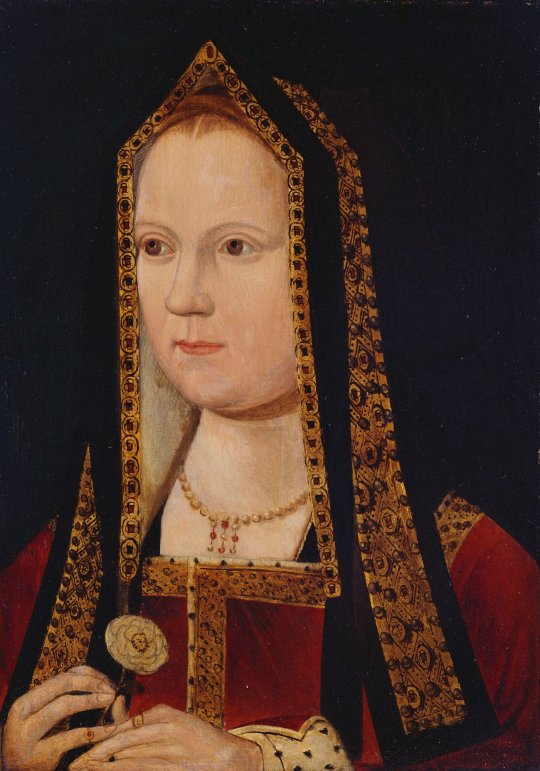

Wewyck's portraits of Henry VII, Elizabeth of York, and Henry VIII
In 1502, Wewyck was sent to the court of James IV in Scotland with four portraits of the Tudor family: the king and queen, Prince Henry (later Henry VIII), and Princess Margaret, who had been married by proxy to James a few months earlier. While these paintings have not survived, 16th-century archivist Jacques Le Boucq included several portraits from the Scots inventory in his Receuil d'Arras, a collection of sketched copies of portraits from around Europe; Wewyck's may have been among them.

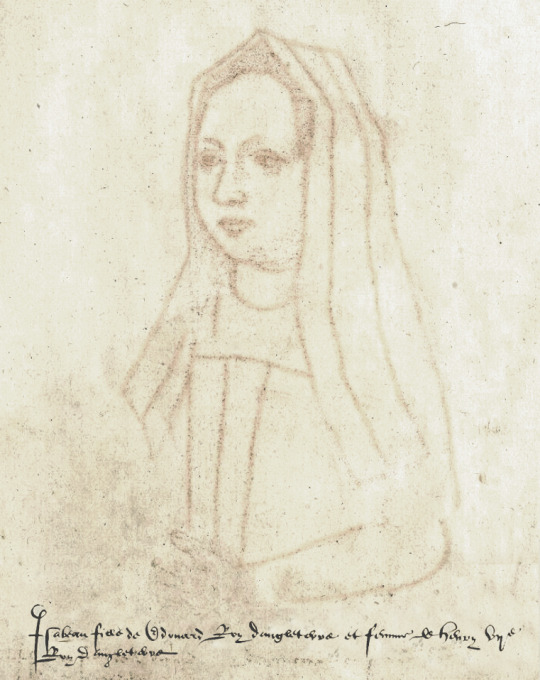
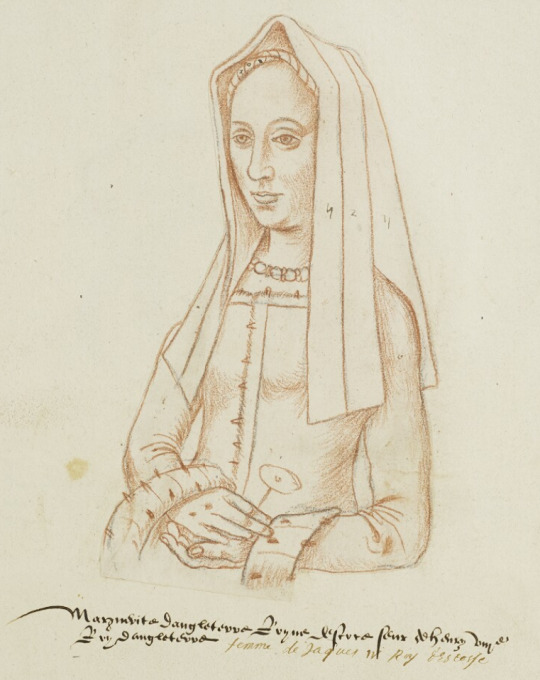
Le Boucq's sketches of portraits of Henry VII, Elizabeth of York*, and Margaret Tudor
*The Elizabeth of York sketch only survives as an imprint on the opposite page; I've approximated it based on the visible lines
Wewyck remained in Scotland for another year before returning to England in 1503, during which time he may have sketched James from life for this later portrait, or else leaving behind sketches to be completed by another artist.
An interesting detail about this portrait: at his wedding to Margaret, James was reported as wearing a gold chain with a ruby and an image of St. George, possibly the chain depicted here.
#never knew about this one#I mean it sure fits the mold of the other Wewycks#stewarts#the Elizabeth of York one looks like a copy of that same portrait#as do the Le Boucq sketches#portraiture#scotland#16th century
55 notes
·
View notes
Note
Hi there
So I follow the Tudor Trio and Nicola Tallis, Matthew Lewis and Nathan Amin were doing a debate today on the Princes in the Tower with the quote on quote new evidence that has been revealed from Philippa Langley.
I still firmly believe Richard III killed the Princes and find many of Matthew Lewis' arguments bizarre. I'm not sure why he thinks the Princes weren't a threat to Richard but were to Henry VII. If the Princes weren't a threat to Richard then why would they have been a threat to Henry VII? I can't understand why Richard would ever let them escape England of his own free Will. There is almost no chance they could have escaped without him knowing about it.
Also he claimed that Henry VII sent Elizabeth Woodville to Bermondsey Abbey and that she was supporting the Lambert Simnel Rebellion. Is there any truth to that? Thanks!
Hi, sorry for taking so long to reply! Lewis' arguments are so incredibly ridiculous — they largely rest on accepting at face value people's signatures and on the claim that Maximilian and Margaret of York were too blue-blooded to ever lie for political ends: essentially, he claims lying was for peasants. And yes, the princes would absolutely be a threat to Richard III as he found out as soon as he left London after his coronation — there happened a rebellion made by former Edwardian servants that aimed to free the princes from the Tower, very possibly to restore them to the throne. The princes had been raised all their lives to regard the English throne as their birthright — you're telling me they would grow up abroad and would neve try a restoration aided by one of England's political enemies such as France?
The ricardian claim that Richard III sent them to Burgundy is incredibly ridiculous to me as well: even if they stayed with Richard's sister, she wasn't the one ruling Burgundy — Maximilian of Austria, the husband of Margaret's deceased daughter-in-law, was. How could Richard be sure Maximilian wouldn't take the princes the minute Richard did something that went against Maximilian's interests and use them to either blackmail him or depose him so Maximilian could have his own English king? Burgundy had displayed lancastrian loyalties not so long ago in the past and the political game in Europe changed constantly.
It would have been absolutely STUPID of Richard III to deliver the strongest weapon anyone could use against him to a foreign power. Let's also mention that Maximilian at the time was struggling with controlling his own children, the actual Burgundian heirs, because some Flemish cities had rebelled against him and had his heir (Philip of Burgundy) in their power and were up in arms against his regency. From June 1483 to July 1485 Maximilian couldn't have control of his own son. You're telling me Richard would have sent the biggest assets anyone could use against him to that unstable scenario?
The truth is that Ricardians like Matthew Lewis benefit from the fact that people study/know about the Wars of the Roses from an impossibly anglocentric lens, ignoring that the conflict was also the outcome of the multiple iterations of power play between Western European powers: 'the Wars of the Roses were an extended episode in a European conflict, not just a murderous private dispute'. It really is inconceivable, when it comes down to logic, how Richard was one step ahead of everyone during the mounting off to his takeover of the throne (bamboozling and imprisoning the Woodvilles, executing and imprisoning Edward V's strongest supporters such as Hastings) but would commit such a basic political error as sending other claimants to his own crown to a foreign power.
As to Elizabeth Woodville going to Bermondsey Abbey as a way of punishment for her supporting a rebellion against Henry VII, it makes little sense as well. Henry VII carried on with the marriage negotiations with Scotland that involved Elizabeth and two of her daughters until James III's death in 1488. Again, it would make little sense for Henry VII to have found out Elizabeth was conspiring against him but keep wanting to send her north as an ally to Scotland, a country that could easily make war on him and create problems. Why would he deliver an enemy into the hands of another possible enemy, if Elizabeth truly conspired against him? Again, it's the lack of perspective into Europe and international politics that jump out in Lewis' logic.
Do my words make sense to you? I truly cannot comprehend how Lewis can say the stuff he says and no one really contradicts him in his logic.
30 notes
·
View notes
Text
ok not to be a fucking British history nerd on main but yall
Henry's royal house is 'Hanover-Stuart' - implying he comes from the House of Hanover
but the last Hanover monarch was Queen Victoria. Her children inherited their father (her cousin's) house- Saxe-Coburg and Gotha. After that the British line of Hanover effectively ended
So the persistence of the name then implies that in the Red White and Royal Blue universe, Queen Victoria - who we know exists as a Queen in universe because of the food fight joke- was either succeed by a much more distantly related Hanover- implying her children either didn't exist or were somehow removed from the line of succession (hello new fictional civil war of 1901), OR it implies that Queen Victoria somehow, in 1840- changed the entire system of patralineage into a matralineage so her children would inherit the Hanover title. This would then in turn imply that the female line would have to be acknowledged as the stronger claimant to the throne meaning the heir to Victoria's throne would NOT have been Edward VII, but instead Victoria's first born- a daughter also called Victoria (hereafter referred to as V2 for clarity).
But in real life V2 went on to become the empress of Germany and the mother of the last German Kaiser - you know the one who was CREEPILY almost incestuously obsessed with his mothers hands and who ALSO LARGELY CAUSED WW1 BY MAKING 1910s GERMANY AN EXTREMELY AGGRESSIVE MILITARY POWER TO RESOLVE IS DADDY ISSUES?! But if in RW&RB V2 never became the German Empress, she never would have had Wilhelm II, and would instead have married a man of lower station and went on to continue the Hanover line in England, meaning there would be no Willhelm II - whos infamously erratic and hostile foreign policy led to the destabilization of Germany's position in Europe and was likely the main contributor to the reactionary foreign policies of other European powers that then caused the beginning of the conflict that became WW1.
SO IN RW&RB, IS THERE NO WW1?!
and that's not even getting into the Stuart of it all - a Royal line that ended IN 1714 AND WAS THE WHOLE SOURCE OF THE JACOBITE UPRISINGS. like if the Stuart line continued in the name, that implies that instead of it dying out with Anne, and the distant relatives of James II then forming the Jacobites to reclaim the throne, they somehow wove them back into the family tree?!
So were there no Jacobite Uprisings in RW&RB?
Is that why Henry is able to be styled as Prince of Wales, despite him not being the Crown Prince- because in this universe with the Stuarts still part of the royal family the Crown Prince's seat now becomes Prince of Scotland, also implying that Scotland has also now become a principality rather than a kingdom?! And how did the Stuart line stay in? Did Victoria NOT marry Albert, but instead marry a Stuart? But no, because the last Stuart was literally a fatherless priest who died 20 years before she was born, and the V&A still exists in universe, so Victoria still definitely married Albert. So did V2 get married off to some distant Stuart (most likely Francis V of Modena)? IS SCOTLAND A PRINCIPALITY NOW?! WHO CAUSED WW1?! WAS IT BECAUSE OF THE FICTIONAL BRITISH CIVIL WAR OF 1901?!
WHY HAVE YOU DONE THIS AMAZON. YOUR SILLY LITTLE CHANGE TO AVOID PISSING OF PONCEY KING CHAZ IS GOING TO EAT HOLES IN MY BRAIN
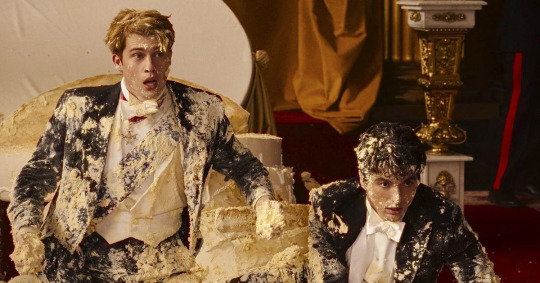
pictured here: my mental state rn
#Its 4:30am and i have brain rot about this movie#and henrys last name has been BUGGING me as a plot point#i know there is no way they thought it through this much#red white and royal blue#henry fox mountchristen windsor#henry hanover stuart fox
67 notes
·
View notes
Text


THE KING'S SISTERS
Margaret and Mary, Princesses of England, were daughters of Henry VII, King of England, and Elizabeth of York, Queen of England, making them the sisters of Arthur Prince of Wales and Henry VIII, King of England. Margaret became the Queen Consort of Scotland by her first marriage to James IV of Scotland, becoming Dowager Queen of Scotland after his death and at times Queen Regent of Scotland on behalf of their son James V, King of Scotland their only child to reach adulthood. On the occasion of her second marriage to Archibald Douglas, Earl of Angus she became the Countess of Angus, they had one child Margaret Douglas who grew up in the court of her brother, Margaret's marriage to Angus ended in divorce which Margaret instigated and successfully obtained at the astonishment of courts abroad including her own brothers. By her third marriage to Henry Stewart, Lord Methven she became Lady Methven no issue came of this union. Through her son, she became the grandmother of Mary I, Queen of Scotland commonly known as Mary, Queen of Scots who was later executed by her niece Elizabeth I of England. Through her daughter, she was the grandmother of Henry Stuart, Lord Darnley and Charles Stuart, Earl of Lennox. She was the great-grandmother twice over of James VI of Scotland and I of England making her the ancestress of all monarchs of England and then Great Britain. Mary became the Queen Consort of France by her first marriage to Louis XII of France, their marriage only lasted two months and three weeks (shorter than any of her brothers' marriages) with the sudden death of her husband, she then became Dowager Queen of France no issue came from this union. Her second marriage was to Charles Brandon, Duke of Suffolk making her the Duchess of Suffolk, their marriage caused quite a stir as Henry wanted to arrange another marriage of alliance for her and Henry's court did not want to grant more power to her husband. They later married a second time in the presence of her brother once welcomed back in her brother's court. They were married for eighteen years and she often took her husband's side on major issues of Henry's reign including being outspoken against his want and later marriage to Anne Boleyn, as well as Anne's character and actions. Her marriage to Charles produced four children with two daughters reaching adulthood Frances and Eleanor. Per the Act of Succession 1536 (three years after her death), her heirs took precedence over her elder sisters and were next in line to the English throne after her brothers. Through Frances Mary was the grandmother of Jane Grey, Queen Regnant of England who was made the heir of Edward VI over his sisters, Jane was later executed by Mary's niece Mary I of England. Mary's other Grey granddaughters Catherine and Mary also were points of contention during Elizabeth I's reign.
[As portrayed by Georgie Henley and Sai Bennett in Starz The Spanish Princess]
#the spanish princess#thespanishprincessedit#perioddramaedit#georgie henley#sai bennett#margaret tudor#mary rose tudor#mary tudor#my edits
71 notes
·
View notes
Note
Hey!
Would you please list every English monarch starting from Edward III?
Well, how wonderful that someone has chosen to RANDOMLY ask me this without my demands for someone to ask so I can flex my niche interest.
Edward III
Richard II
Henry IV
Henry V
Henry VI
Edward IV
Henry VI (again, this was during the wars of the roses)
Edward IV (again, once again this was during the wars of the roses. Also, shortly after this Henry VI conveniently died of grief was murdered, where he was imprisoned in the Tower of London, after his son died at the Battle of Tewkesbury.)
Edward V (son of Edward IV with Elizabeth Woodville. Due to there being some disagreement about whether or not their children were legitimate, Edward’s brother, Richard, took over the boy’s care, along with Edward V’s younger brother, Richard Duke of York, and held them at the Tower of London where they also… mysteriously disappeared.)
Richard III (guy mentioned above who imprisoned his nephews and likely had them killed and never mentioned them again or explained what had happened.)
Henry VII
Henry VIII
Edward VI
Mary I
Elizabeth I
James I & VI (dual monarchy between England and Scotland. He was the first king James of England, but the sixth king James of Scotland.)
Charles I
Charles II (after the reformation of the monarchy after the common wealth with Oliver Cromwell as Lord Protector, fuck that dude I spit on his name.)
James II & VI (see James I & VI to understand the two regnal numbers.)
William III & Mary II (ruled as co-monarchs, as they were married, until Mary’s death in 1694. After which William III ruled on his own until 1702.)
Anne
George I
George II
George III
George IV
William IV
Victoria
Edward VII
George V
Edward VIII (Nazi cuck)
George VI
Elizabeth II
Charles III.
Thank you for doing this totally unprompted! ❤️
2 notes
·
View notes